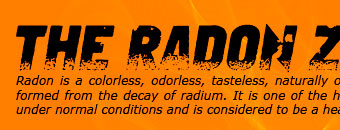 |
 |
 |
||||
|
||||||
| Call: 417-844-0942 | ||||||
|
»Radioisotopes in Research Laboratories This page provides an overview of the various types of radioisotopes used in research laboratories. Overview Research facilities use radioactive materials in the development of new products and in scientific research studies. Radionuclides may be contained in small vials or be part of large devices with sealed radioactive sources, such as an x-ray machine. Several examples of how radioactive materials are used in research include: Medical researchers use radioactive materials in the development of new cancer treatments. Agricultural researchers use radioactive materials for the advancement of insect control, development of disease-resistant plants, and the production of fertilizers. Environmental scientists use small amounts of radioactive materials to trace the movement of chemical contaminants through water and soil. Geologists use the naturally-occurring radioactive materials in the earth, such as uranium, to determine the age of rock formations and to study continental drift. Archaeologists determine the age of artifacts using carbon dating, a process that uses the naturally-occurring radioactive element Carbon-14 When using radioactive materials in research, a number of issues have to be addressed: Safety - Strict requirements must be followed before a research facility can order, store or use radioactive materials. Safety requirements include documenting that all personnel using radioactive materials are qualified to do so, that the research facility is prepared to handle the materials safely, and that the proposed use is safe to workers and the public. To inform emergency responders during a natural disaster or terrorist incident, facilities are required to keep records on the amount and kind of radionuclides, radioactive elements, in their possession. Air Emissions - Research with radioactive materials may involve the release of radionuclides to the surrounding air from the laboratory. In most cases, air emissions from these facilities must be calculated and publicly reported on an annual basis. Waste Disposal - The use of radioactive materials in research laboratories has the potential to create radioactive waste. All radioactive waste produced by these facilities must be disposed of according to applicable state and federal requirements. |
|
|||||